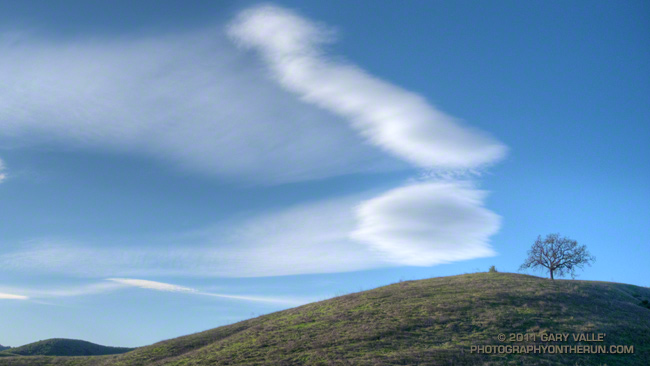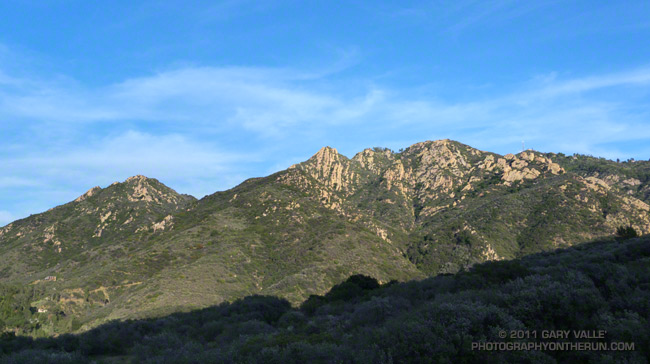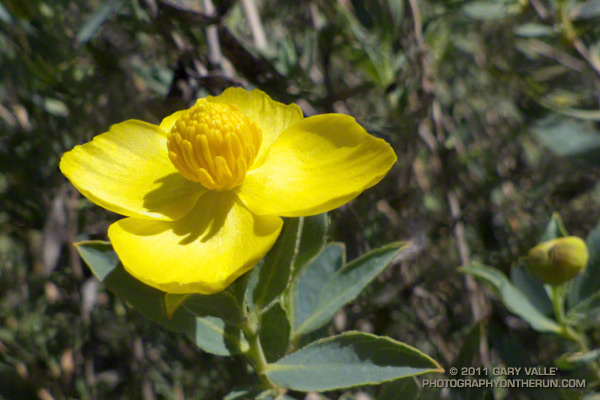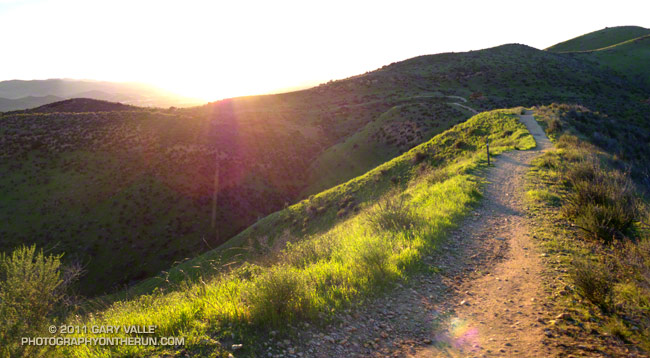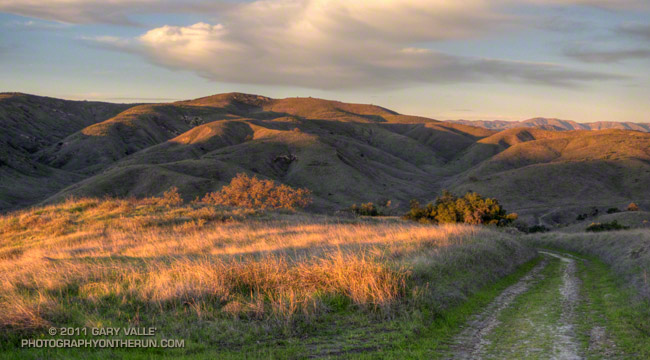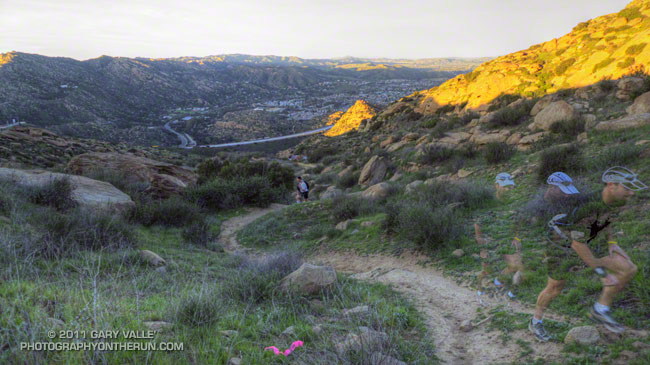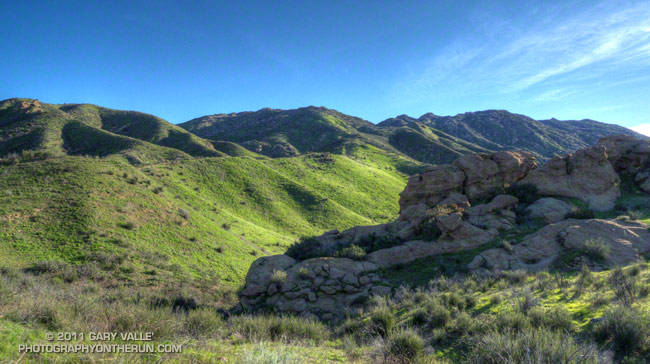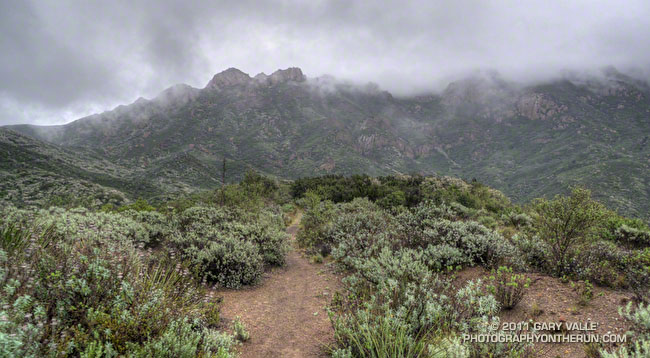
Boney Mountain from the Old Boney Trail
It started to sprinkle as I walked from my car to the Wendy Drive trailhead. In a matter of minutes the sprinkles turned to a light, but steady rain, and the Satwiwa trail started to become slick with mud. The rainy weather would continue through most of my run in Pt. Mugu State Park.
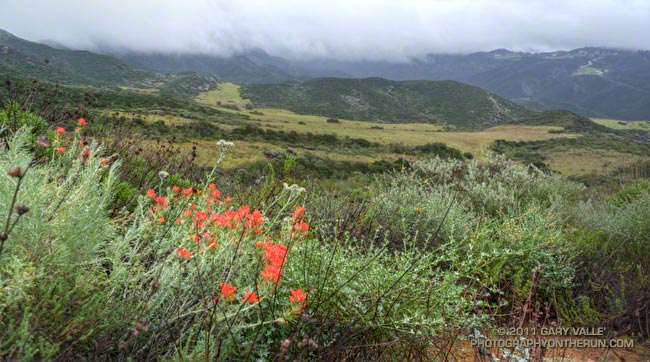
It was wet today, but today’s rain was the first in Southern California in nearly a month. Southern California was very wet from October through December, but the storm door from the Pacific into California slammed shut in early January. The weeks of wet weather followed by weeks of warm, dry weather has the plant communities of the Santa Monica Mountains thinking it’s Spring.
Among the flowers blooming along the Old Boney and Serrano Valley trails were paintbrush, encelia, milkmaids, phlox, shooting star, nightshade, wild cucumber, canyon sunflower, deerweed, and bigpod ceanothus. But more than the plants have responded. On January 17, trail runner Howard Cohen took this video of a sizable rattlesnake on the Old Boney Trail!
Some related posts: Serrano Valley from Wendy Drive, Serrano Valley from the Chamberlain Trail

